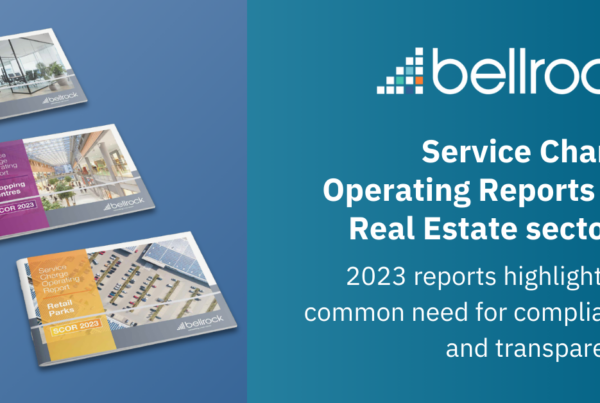Fire Compliance: Fire risks, regimes and regulations
While many companies are looking to reduce staff costs without reducing their ability to service their clients once business life returns to normal through programmes such as furloughing, likewise an informed approach to demobilising and remobilising their property assets can save money and enable a phased, if necessary, but rapid re-occupation of their buildings.
Although our ways of working may have changed, most workplaces will still need social activity and collaboration as the world re-awakens from the social distancing lock-down.
It’s important to develop a forward-thinking remobilisation strategy as personnel return to work, potentially on a phased basis.
Fire Risk
Fire risks to unoccupied buildings come from external factors and from equipment failures in the buildings themselves and have impacts from both a regulatory and an insurance point of view.
External risks include the risk of arson. Unoccupied buildings are often the target for antisocial activity. A Good Practice response includes ensuring the perimeter of the building is cleared, that storage yards and adjacent areas are secured and that any combustible materials are removed.
Equipment failures should reduce as less people occupy buildings but the time taken to detect fires and raise the alarm may subsequently increase, increasing the potential spread and intensity of the fire. Fire alarm sounder tests will need to be carried out via a walk-through.
From both a regulatory and an insurance point of view It is important to review Fire Risk Assessments in accordance with the Regulatory Reform (Fire Safety) Order 2005. These regulations require Fire Risk Assessments to be reviewed where material changes in operation occur. It is important that Fire Risk Assessments remain ‘suitable and sufficient’ at times.
Partially occupied buildings typically have less Fire Wardens in place, occupancy times will have changed and the building will not be being fully used as intended, therefore, an FRA must to be carried out to reflect the new use patterns for the building to reflect a new way of protecting the building from fire risk.
Procedures for Redcare notifications may need to be reviewed as the Fire Brigade may be operating to different instructions and the usual building contact may be unavailable during the shut-down period. Weekly maintenance should continue to include sprinkler generator tests and visual checks for wet sprinkler systems. Fire alarms will need a full test and may need recommissioning before
buildings can be re-occupied, even partially. Similarly, emergency lighting systems will need full battery discharge tests. The position of Insurers will be that non-compliance on any regulatory requirements will invalidate the policy.
Building Maintenance Regimes
Building maintenance regimes can be modified to reflect the reduced use of a building, however, it is important to understand which maintenance activities need to be carried out and which do not during shut-down.
Certain activities may not be required for unoccupied buildings, for example testing passenger lifts at their 6 monthly intervals as required by the LOLER lifting regulations if the testing period falls during shut-down, but it important to remember that the test certificate will need to be valid on day-one of any re-occupation.
Special Cases
Special cases include listed buildings and timber frame constructions. While construction sites are not currently universally shut down by the Government, they constitute their own specific risk. Social distancing working practices and fewer workers on site means that detecting fires and raising the alarm may be slower. Risk assessments for specific tasks may need to be reviewed and revised with higher levels of supervision for certain activities. If the guidance to suspend all construction activities is given, sites will have to be shut down quickly but effectively, and maintenance regimes developed for any systems that remain live.
Portfolio Owners
Where clients have large portfolios it is worth considering a whole estate strategy to closures. Where clients such as Multi-Academy Trusts have a number of schools, some have rationalised key worker and vulnerable children into a single school with the cost of transportation being outweighed by the operation and maintenance costs of the other buildings which have been put into mothballs. SFG30 is intended to give guidance in such scenarios where an estate has been affected by temporary closures or change in use. By considering an adaptive estates strategy, easing the disruption and cost as staff return to work on a phased basis may be the most effective way to return to ‘normal’ working practices.
Key Points:
- Fire Risk Assessments need to be reviewed where material changes in operation occur which includes reduction in staff numbers or operating hours
- Ensure sufficient Fire Wardens are available to re-occupy the buildings if Fire Wardens have been amongst furloughed staff.Fire Systems may require retest or even re-commission before the building can be occupied again.
- Ensure Redcare arrangements are reviewed regularly as building contacts may be unavailable due to self-isolation
- Review external fire risks considering that the building will not be monitored by occupants or the wider general public during ‘lock-down’
- The position of Insurers will be that non-compliance on any regulatory requirements will invalidate the policy
Gareth Jones | Managing Director
MIIRSM, BSc, HNC, GradIOSH, DipNEBOSH, CMaPS, DipFD
Nifes Consulting Group
gareth.jones@nifes.co.uk
+44 (0)7917 715 269







